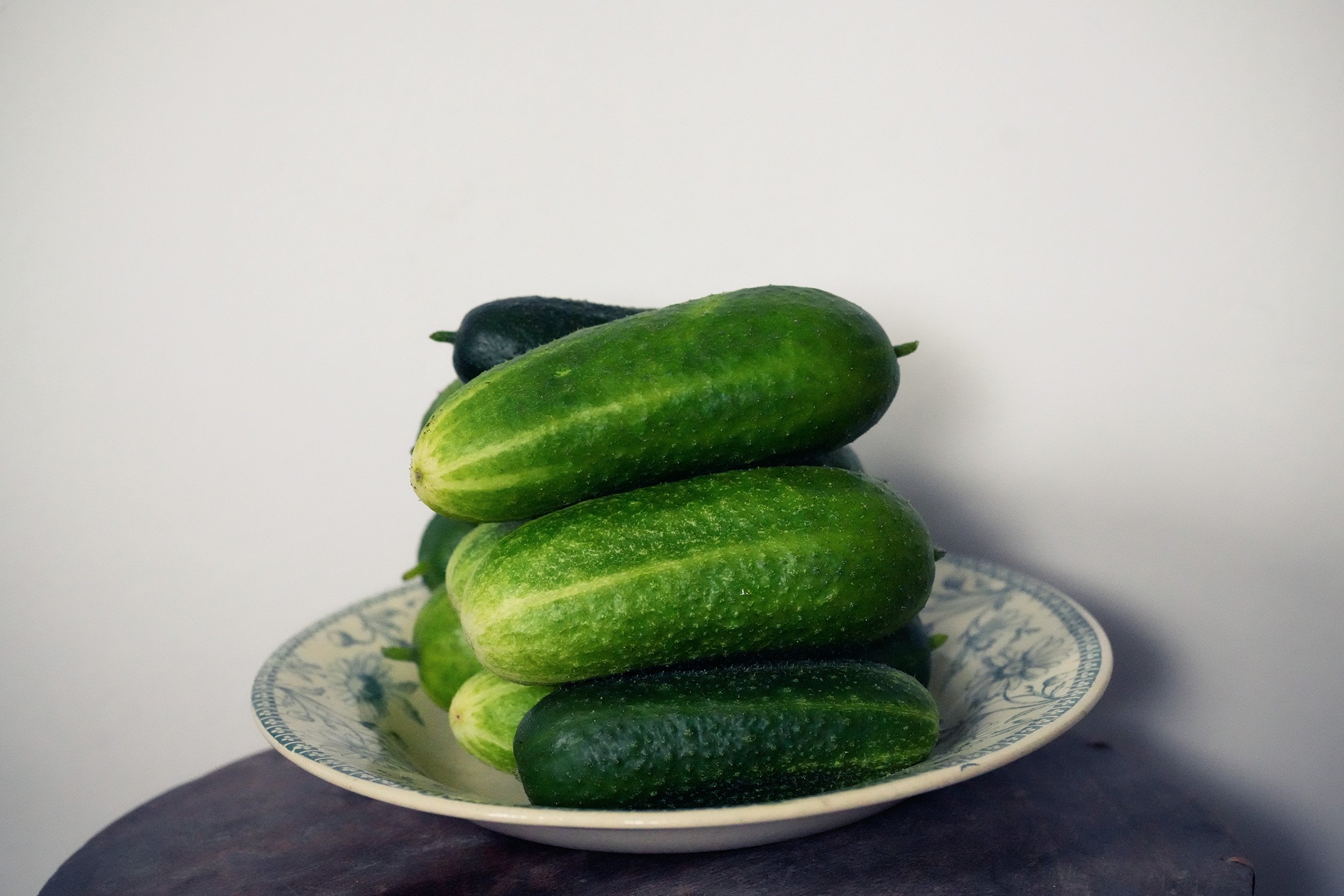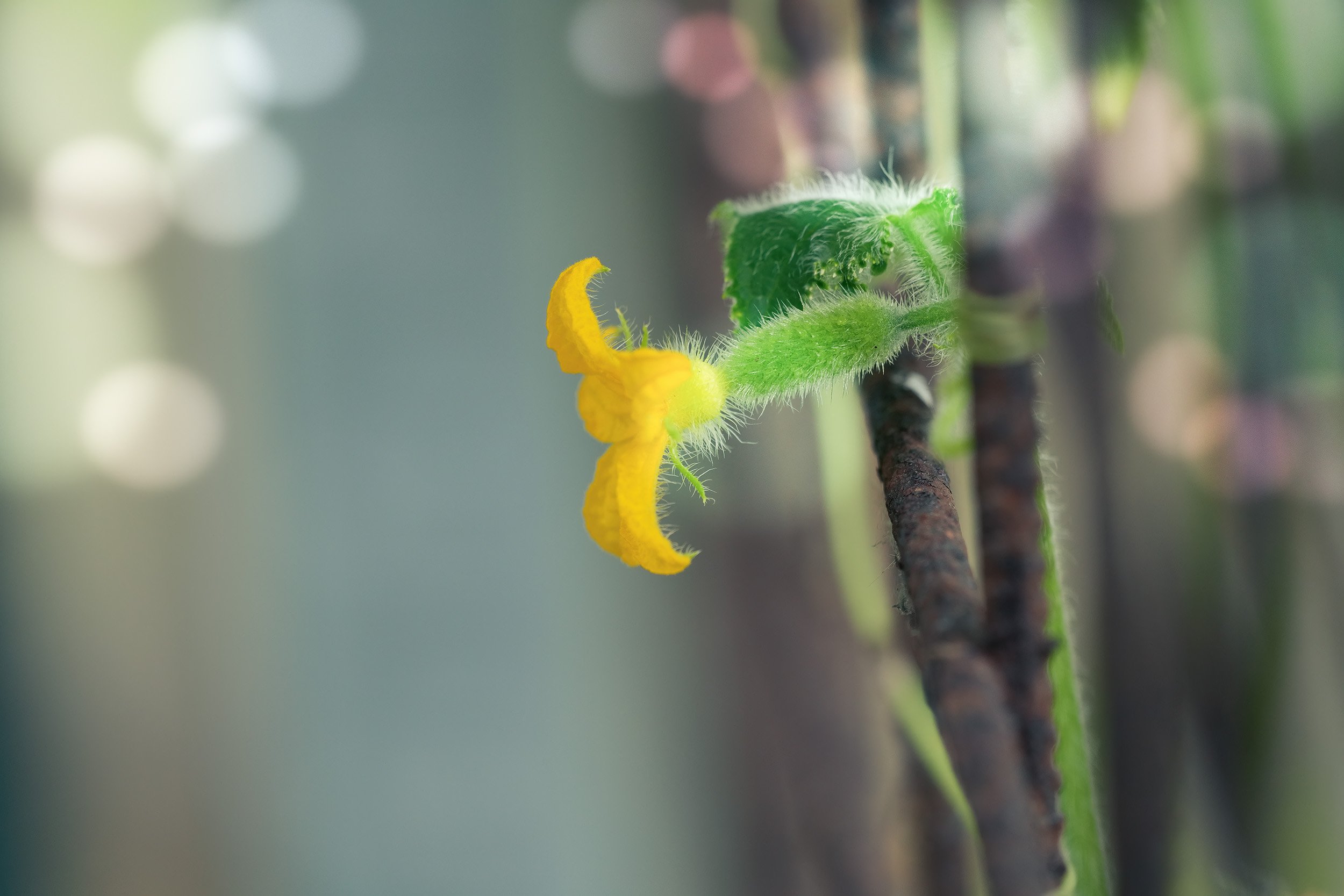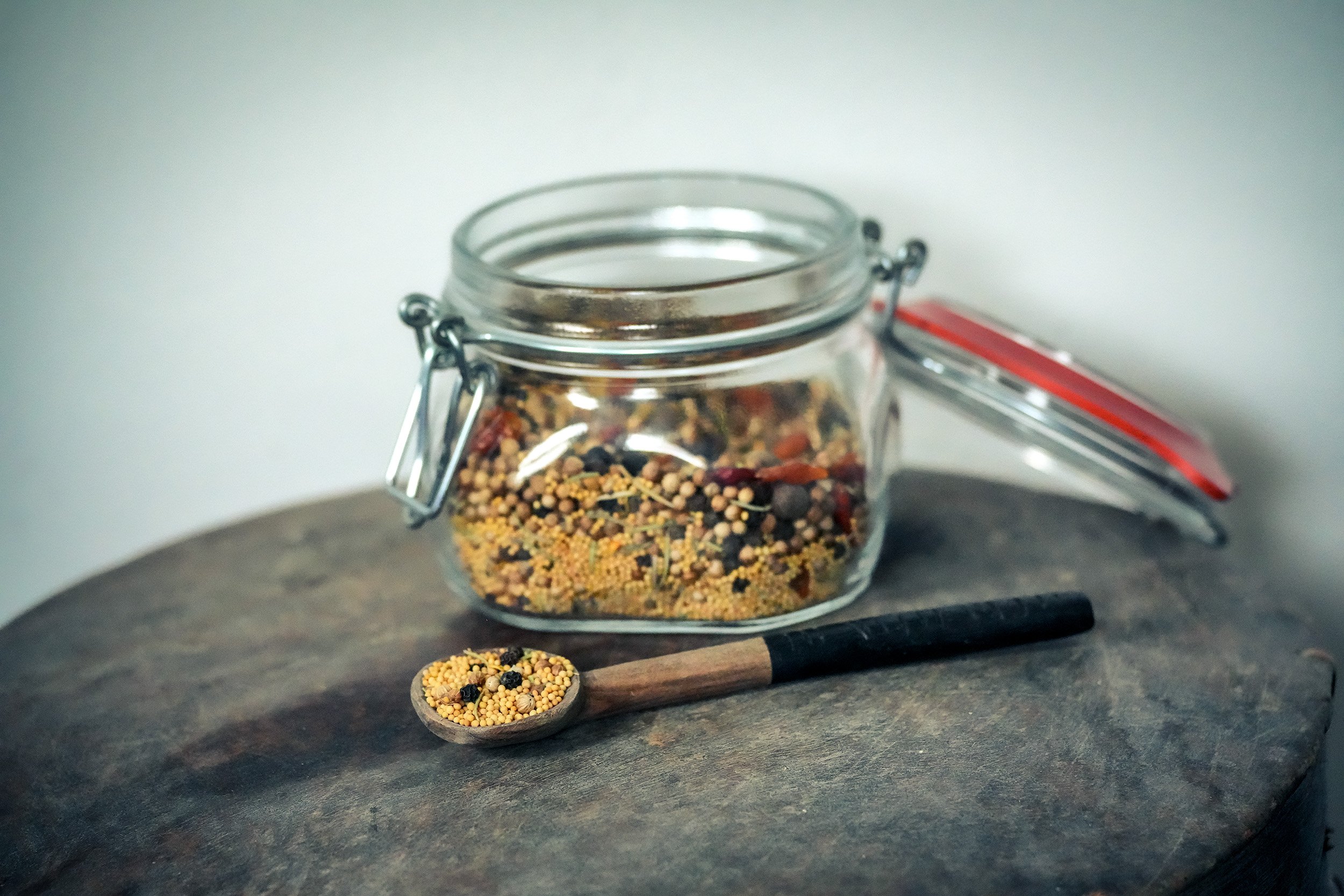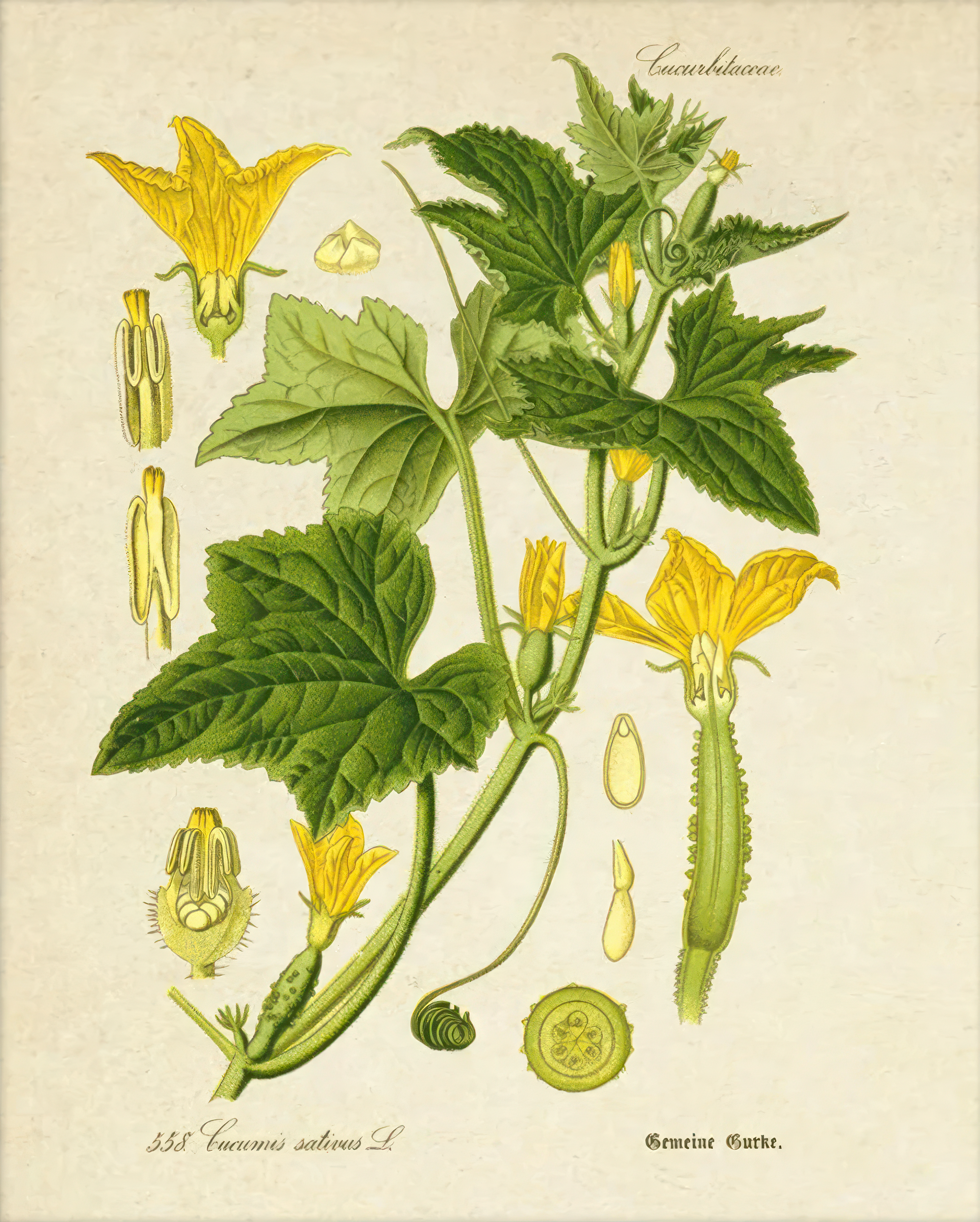I've always wanted to write about Gherkin
I always wanted to write about the pickle. Is this prickly gherkin just a small, early-harvested cucumber? Why the spiky skin? And why on earth did Queen Cleopatra of Egypt consume them so often? Since so many grow in our greenhouse at present - I can harvest almost daily - I thought it was time look into this matter. Why are the pickled ‘cornichons’ I eat in France so much more sour than the ones here at home in the Netherlands? If you've also been walking around with these questions for ages, and I am almost certain you have, read on. As a bonus at the end, a canning- and Egyptian beauty recipe.
Cucumber, pickle or gherkin? What’s in a name?
The gherkin and cucumber are actually family: they both belong to the species Cucumis sativus. Growers developed them into different varieties producing cucumbers that are larger and smoother-skinned and our Gherkin, a prickly pickle. However, cucumber is not only larger and smoother-skinned, but it is also softer in taste and structure, and has more juice than his little brother the gherkin. For that reason, the cucumber is nice to eat straight from the vines or bushes. Brother Gherkin, on the other hand, needs some extra care. Eaten raw, a pickle is hard, with a prickly skin and far from tasty. Actually, the biggest nutritional difference between cucumbers and gherkins is a result of the fermentation process involved in pickling, as bacteria from the fermentation adds nutrients to the pickles. Hang on, more about fermentation in a minute.
Embraced with open arms
Once you start to delve into the origins of the pickle, you can immerse yourself in hours of reading. That's how I found that cucumbers are already cultivated for at least 3000 years, originated from India, and most probably traveled to Europe with the Greeks or Romans. The brave Gherkins wandered a great deal and eventually ended up in Eastern Europe where the Jewish communities embraced them with open arms. Pickling vegetables is an old Jewish custom and a dietary staple for Jews living in cold weather countries like Ukraine, Poland, Lithuania and Russia. During the autumn, Ashkenazi Jews used to fill big barrels with cucumbers, beets and shredded cabbage. This mixture fermented in a warm place for several weeks, then moved to cool cellars. A tasty winter stock until spring, when new vegetables would grow.
Recently I was given a Jewish cookbook, part of my mother's legacy, including a recipe for pickled beetroots: Bieten Eingemachts. I will share it at a later time (yes, there are a lot of beetroots growing in our vegetable garden and I feel a story coming up), because we are in danger of straying from our brave Gherkins.
It were the Jews who ensured that the pickling the gherkins spread across Europe and later the rest of the world. We recently visited New York and stayed in Manhattan’s Lower East Side. It was here the Gherkins were really popular in the late 19th and early 20th-centuries when many Jews migrated from Eastern Europe, bringing their traditional fermentation recipes with them. Of the foods they introduced to New York, the kosher dill pickle was the most popular. Dill (fresh or the seed) is said to make the pickles crunchier. I always add it to my fermentation mixture.
Market day in Jewish quarter of East Side, New York City, 1912 [source]
How camest thou in this pickle?
In the 1611 play The Tempest, Shakespeare (mis)used Gherkin to refer to finding oneself in a difficult position when Alonso asks Trinculo, ‘How camest thou in this pickle?’ to which Trinculo responds, ‘I have been in such a pickle since I saw you last that, I fear me, will never out of my bones: I shall not fear fly-blowing’. Cleopatra of Egypt, on the other hand, took advantage of Gherkin. She attributed her health and beauty to the regular consumption of pickles while her lover Julius Caesar fed Gherkins to his troops believing they would make them strong.
So you hopefully realize, it’s not at all a bad idea to have a regular dose of Gherkin in your life.
I could have never imagined there was so much to tell about this little prickly pickle. I'll have to dive into the history of the carrot some day soon. Or the beetroot. And who knows how fascinating the history of kohlrabi is. So much inspiration in our garden. To be continued. [pickle recipe under photos]
Cleopatra of Egypt attributed her health and beauty to the regular consumption of pickles. Historical photo from the phantasy of © Mirjam Letsch
Pickled gherkins : a recipe
It’s believed (although more research is necessary) that the acidity of the brine of pickled gherkins (either sliced or whole), that have been fermented and preserved in either salty brine or vinegar, helps perform lacto-fermentation by creating good bacteria that act as a probiotic which will benefit your digestive and gut health. My recipe below is without salt, but if you do add salt, be careful not to consume too much.
Are you a French Sourpuss or a Sweet Dutchman?
Just joking, of course, but the fact is that the French pickles are much more sour than what we are used to here in the Netherlands. So it depends on your taste whether- and how much sugar you add. My recipe has little to no sugar and is also salt free. I stick with water, vinegar and spices. But feel free to experiment.
THIS IS WHAT YOU DO:
As with any fermentation method you have to work clean: wash your hands, gherkins, chopping board and knife so no harmful bacteria get involved
Sterilize your jars (google if you don’t know how to do that).
Chop your gherkins: slice them into slices, or cut them lengthwise.
Prepare your bine: I use 35% water and 65% vinegar and very little sugar (100 g per liter liquid would be acceptable, I use less because I like it sour). Add your spices (see below) and bring to a boil, let simmer for a few minutes.
Spices: for instance: 2 tablespoons black peppercorns, 2 tablespoons mustard seeds, 2 tablespoons coriander seeds, 2 tablespoons dill seed, 1 tablespoon allspice berries, 2 bay leaves, crumbled, 1 tablespoon crushed red pepper flakes.
Add your gherkins to the jar, and pour over the brine. Make sure that the pickles remain submerged below the water line.
Leave your jars at room temperature for 2-6 days before eating. You may have to remember to open it each day to allow the gas to escape.
The gherkins will become softer and slightly sour quite quickly. After 6 days, your pickles should be tasting tangy and delicious. You can store them in the fridge or cool cellar whenever you are happy with the level of acidity. They will last for up to 2 months.








